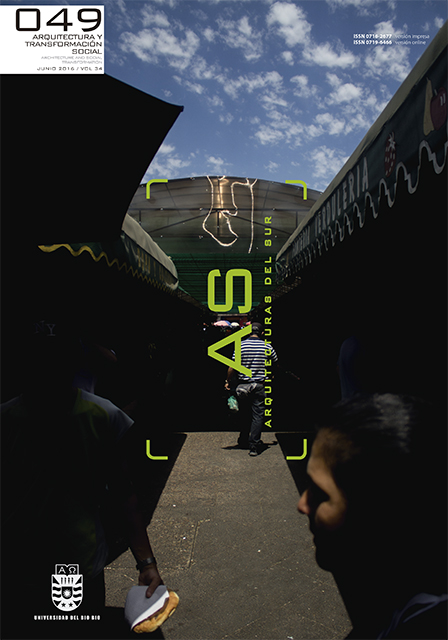Strategies for the interpreter architect: The Consulting Room at the Landscapes Laboratory
DOI:
https://doi.org/10.22320/07196466.2016.34.49.03Keywords:
landscapes, creative process, cultural identity, community involvement, architectural designAbstract
The objective of this article is to present some of the methodological strategies used by the Consulting Room at the Landscapes Laboratory to approach the community and in this way improve their lives. Specifically, the Laboratory works with vulnerable Andean communities near the city of Quito (Cotogchoa and La Merced). With their social organization and thanks to the involvement of various actors, it aims to raise healthy and harmonious landscapes through participatory projects. The word "raise" originates in Andean conceptual ideas, which assume that all components are living beings. Therefore, landscapes should be nurtured, cared for and respected to create relationships and emotional ties with them. The proposed projects require special sensitivity to the territory and involve the revaluing of the role of the technician, who interprets needs and realities to reach consensus. Thus, in short this academic work seeks to support processes of reflection and social transformation.
Downloads
References
BALCAZAR, Fabricio E. Investigación acción participati- va (iap): Aspectos conceptuales y di cultades de imple- mentación. Fundamentos en humanidades, 2003, n° 7-8, pp. 59–77.
BERROETA, Héctor y RODRÍGUEZ, Marcelo. Una expe- riencia de participación comunitaria. Revista Electrónica de Psicología Política, 2010, no 22, pp. 1–26.
BOFILL, Anna. Vivienda y espacio comunitario (Habitat- ge i espai comunitari). Urbanismo y Género. Una visión necesaria para todo el mundo, 2005, no 2011, pp. 1–7.
BORJA, Karina. Criar Paisajes Vivos, una manera de apre- hender los paisajes andinos. El Caso de San isidro de El Inca. Tesis doctoral. Universidad del País Vasco, 2012.
CORBIN, Juliet y STRAUSS, Anselm. Grounded Theory Research: Procedures, Canons, and Evaluative Criteria. Qualitative Sociology, 1990, no 13, pp. 3–21.
GARCÍA RAMÍREZ, William. Arquitectura participativa: las formas de lo esencial. Revista de Arquitectura de la Universidad Católica de Colombia (Bogotá), 2012, no 14, pp. 4–11.
GARCÍA VÁSQUEZ, María de Lourdes. Aplicación de Me- todologías Participativas en el campo urbano y arquitec- tónico. Working paper, Universidad Nacional Autónoma de México, S.f.
MORALES HERNÁNDEZ, Álvaro. La metáfora colectiva. Metodología participada en la arquitectura y el urbanis- mo. Urban [en línea], 2011, n° 7, pp. 31-51. [Consultado 03 junio 2016].Disponible en: http://polired.upm.es/index. php/urban/article/view/346.
SÁNCHEZ-CUENCA, Jordi. El arquitecto re exivo. Boletín CF+S, 2010, n° 44, pp. 85–94.
Downloads
Published
How to Cite
Issue
Section
License
Copyright (c) 2016 Renato Sebastián Ríos, Juan Carlos González, Ekaterina Armijos, Karina Borja, María Dolores Montaño

This work is licensed under a Creative Commons Attribution-ShareAlike 4.0 International License.
The content of the articles published in each issue of Arquitecturas del Sur is the sole responsibility of the authors and does not necessarily represent the opinion of University of the Bío-Bío.
The authors will maintain their copyright; however, they will guarantee the journal the right to first publication and dissemination of their work. The publication of the article in Arquitecturas del Sur will be subject to the Creative Commons International license (CC BY-SA) that allows others to adapt: remix, transform and build on the material for any purpose, even commercially; share: copy and redistribute the material in any medium or format, as long as the authorship and first publication in this journal are acknowledged by citing them correctly, and their new contributions are under a license with the same terms.














 Programa de Información Científica/Concurso Fondos de Publicación de Revistas Científicas 2018/ Proyecto Mejoramiento de Visibilidad de Revistas UBB (Código:FP180007)
Programa de Información Científica/Concurso Fondos de Publicación de Revistas Científicas 2018/ Proyecto Mejoramiento de Visibilidad de Revistas UBB (Código:FP180007) 
